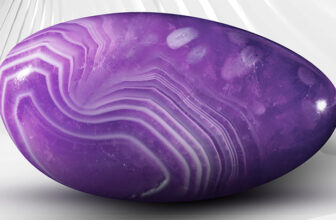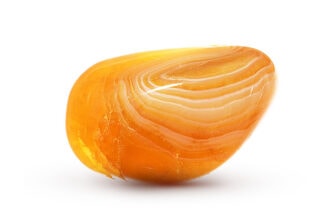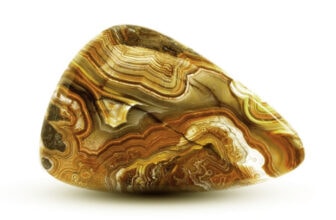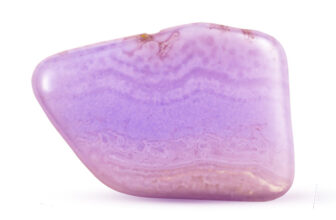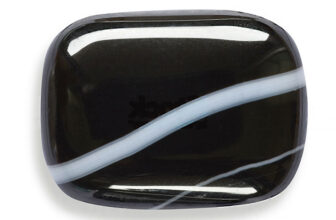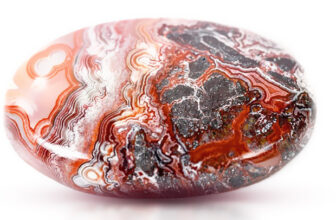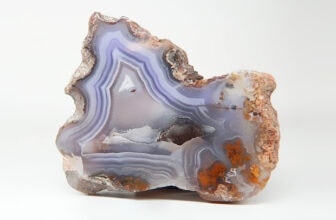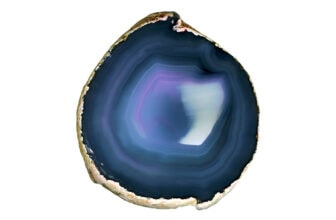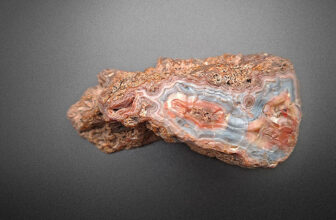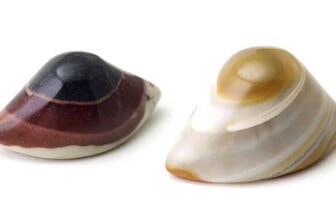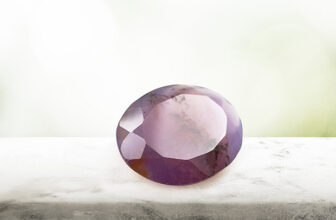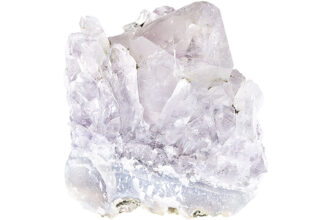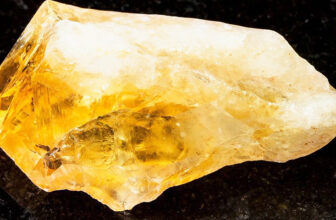When Earth Becomes Art: The Allure of Crystal Slabs
 Have you ever wished your space could hum with the quiet, grounded beauty of the earth itself? Crystal slabs are one of the most powerful ways to make that happen. These large, flat-cut slices of gemstone reveal nature’s hidden artistry – rippling veins, color bands, translucent depths – all polished into smooth surfaces that invite both touch and reflection.
Have you ever wished your space could hum with the quiet, grounded beauty of the earth itself? Crystal slabs are one of the most powerful ways to make that happen. These large, flat-cut slices of gemstone reveal nature’s hidden artistry – rippling veins, color bands, translucent depths – all polished into smooth surfaces that invite both touch and reflection.
Unlike small tumbled stones or faceted gems, a slab speaks in a larger language. It isn’t about sparkle or size alone – it’s about presence. Whether mounted as a tabletop, displayed upright on a stand, or glowing softly under backlighting, a crystal slab captures the soul of its source in breathtaking detail. You see the entire story of the mineral: the patterns, the flow lines, even the pauses where time layered color upon color.
Crystal slabs bridge two worlds – beauty and utility. They’re at home in a living room or a meditation studio, equally comfortable in a designer’s vision or a healer’s workspace. They let you experience the grandeur of the crystal realm not as an ornament, but as a surface – something to live with, to lean on, to touch.
In the “Shapes & Forms” family, slabs hold a distinct place. They stand apart from cabochons (small, domed gems meant to be worn), palm stones (smoothed for comfort), or raw chunks (wild and rugged). A slab is where nature meets design – a flat stage where the inner world of the mineral takes center spotlight.
Origins
Where does the term slab come from, and why does it matter? In lapidary and stonework, a “slab” simply means a slice – a flat section cut from a larger block of material. But within that unassuming word lies centuries of craftsmanship and fascination.
In ancient architecture, artisans used slabs of marble, onyx, and agate to line temples and palaces. The goal wasn’t just luxury – it was illumination. When sunlight passed through thin, translucent stone, the walls seemed to glow from within. Early builders discovered something profound: that rock could hold light.
Over time, gemstone slabs became symbols of prestige and spiritual connection. In Renaissance Italy, noble families commissioned inlaid tables made from lapis lazuli and malachite. In ancient Egypt, slabs of alabaster lined sacred tombs, chosen for their purity and inner luminescence. Even early lapidaries prized large, thin sections for study – because only a slab revealed a crystal’s full patterning and growth structure.
The Appeal of Crystal Slabs
What draws someone to a crystal slab instead of a smaller, easier-to-hold stone? Maybe it’s that quiet craving for something bigger – a piece that doesn’t just sit on a shelf but transforms the space around it. When life feels scattered, even chaotic, large, grounding forms like slabs can anchor a room – and your mind.
From Décor to Function
Beyond aesthetics, crystal slabs are deeply practical. They make remarkable surfaces – coffee table tops, countertops, wall panels, or luminous back-lit installations. When light passes through translucent stones like quartz or agate, the effect is otherworldly. Even small slabs can become functional art: serving trays, display bases, coasters, or bookends that merge luxury with nature.
Interior designers love them because they carry emotional texture. A rose quartz slab adds warmth and serenity to a space; a smoky quartz piece grounds it. A large amethyst slice radiates calm, perfect for wellness studios or meditation rooms. The right slab doesn’t just decorate – it sets the tone of an entire environment.
The Energetic Dimension
And then there’s what you can’t see. To many crystal enthusiasts, a slab functions like a foundation stone – a broad, stable base for energy work. Its flat form makes it ideal for crystal grids or as an altar platform, allowing other stones to rest and interact harmoniously. Because slabs expose so much surface area, their energetic field is often described as steady, expansive, and balancing.
Healers sometimes use them beneath other crystals to amplify intentions or to “ground” lighter, more volatile energies. Placing a slab beneath a cluster or sphere can intensify the connection between different stones, turning a single point of focus into an entire energetic landscape.
When a Slab Is the Perfect Choice
So, when does this form truly shine? Choose a slab when you want impact, presence, or function – something that becomes part of your environment rather than an accessory. It’s perfect when your goal is to highlight the stone’s natural art, or when you want a stable, energy-rich surface for meditation, healing, or display.
If you’ve ever felt that smaller crystals get lost in your space – or that your décor feels too sterile – a crystal slab can change that instantly. It bridges the sensory and the spiritual: solid enough to ground you, luminous enough to inspire you.
Forms, Textures & Artistic Expressions of Crystal Slabs
Ever noticed how some stones feel alive when light hits them just right? Crystal slabs are made to capture that moment – and hold it. But not all slabs are alike. Their shape, finish, and thickness can completely transform how they look, feel, and function. Let’s explore the variety that makes these pieces so endlessly fascinating.
The Classic Flat Form
Most crystal slabs start as simple shapes: rectangular, square, or roughly oval. They’re cut flat and polished to a glassy smoothness that reveals the stone’s intricate inner world. A few millimeters of polish can make all the difference – suddenly, fine bands of agate glow, or subtle quartz clouds shimmer with light.
Small slabs (think palm-sized to dinner-plate scale) are popular for tabletops, décor, or energy work. Larger ones – sometimes several feet across – become architectural features: countertops, tabletops, even translucent wall panels. In both scales, what they share is presence. You feel them in the room before you even consciously look.
Finishes & Edge Styles
The finish tells its own story. A high-gloss polish turns the surface into a mirror, amplifying colors and light. Honed or matte finishes give a softer, more natural look, almost like touching the raw earth. Some slabs are left with natural edges – uneven, wavy borders that reveal the original contour of the crystal nodule or vein. Those rough edges add character, balancing the refined polish of the face with a hint of wildness.
Designers often play with backlighting, especially for translucent stones like agate, quartz, or fluorite. When lit from behind, these slabs transform into glowing art – veins and patterns suddenly alive with light. It’s like seeing a sunrise through stone.
Variety in Material & Mood
Different stones express themselves differently in slab form:
- Agate: Known for concentric bands and rich color variety, perfect for back-lit installations.
- Quartz (clear, rose, smoky): Offers transparency and inner glow, suitable for both décor and metaphysical bases.
- Amethyst: Displays regal violet tones, often with shimmering crystal edges or natural inclusions.
- Labradorite: Shimmers with flashes of blue, green, or gold – each movement changes the light.
- Jasper & Bumblebee Jasper: Earthy, bold patterns ideal for grounded, statement surfaces.
- Selenite: Silky white, luminous, used often in healing spaces for its soft, cleansing energy.
Special-Purpose Slabs
Some slabs are crafted for more specific uses. In metaphysical practice, altar slabs serve as sacred bases for rituals or crystal grids. In interior design, book-matched slabs – two mirrored cuts from the same block – create symmetrical patterns like wings or flowing rivers across a wall.
For those drawn to practical beauty, smaller functional slabs make stunning serving trays, coasters, or display stands for jewelry or minerals. Even in small scale, they radiate that same sense of calm grandeur that makes the larger pieces so captivating.
A Universe on a Surface
No two slabs are the same. Every one holds a different rhythm – striations, sparkles, fractures, and flows that tell the story of how it formed. You’re not just choosing décor; you’re choosing a moment in geological time, captured and polished to perfection.
From Stone to Surface: How Crystal Slabs Are Crafted
Ever wondered how a raw, rugged piece of stone transforms into a silky-smooth crystal slab that glows under your fingertips? It’s part science, part craftsmanship, and part quiet reverence for the material itself. Creating a crystal slab means taking something ancient and unpredictable – and shaping it just enough to reveal its hidden beauty.
From Raw Stone to Refined Surface
It all begins with a block of crystal-bearing rock. Some are quarried directly from the earth, others selected from rough mineral veins or geodes. The choice depends on what the maker envisions: translucent quartz for backlit panels, bold jasper for statement surfaces, or shimmering labradorite for iridescent tables.
Large diamond-tipped saws or precision water-jet cutters slice the rough stone into flat sheets – sometimes thin as a few millimeters, sometimes several centimeters thick. Each cut is a careful decision: too thick, and the slab loses its glow; too thin, and it risks fracturing under its own delicacy.
The Polishing Process
Polishing is where the magic happens. Craftsmen use progressively finer abrasives to grind away imperfections, revealing the stone’s internal structure layer by layer. What begins as a rough surface slowly turns reflective, like water smoothing a river stone over centuries – except sped up by skill and precision.
For glossy finishes, the polishing goes all the way to mirror-level smoothness. For more organic designs, a honed finish stops earlier, keeping a soft matte texture that feels velvety and natural. Each approach brings out different aspects of the stone’s personality.
Engineering Light and Strength
For backlit pieces, the process gets even more technical. The stone must be thin enough to allow light through but thick enough to stay strong. Certain crystals, like agate or quartz, transmit light beautifully when sliced to around one or two centimeters. Installers may mount them onto glass or acrylic panels to diffuse illumination evenly and prevent heat damage.
Meanwhile, large slabs destined for countertops or furniture undergo quality control: checking for internal cracks, weak veins, or uneven thickness. The goal is a perfect balance – beauty, integrity, and longevity.
The Human Touch
Despite all the machines and precision tools, the process remains deeply human. Lapidaries develop an intuitive sense of how each crystal will behave under the saw, how pressure might shift along a vein, how a polish will highlight or mute a certain hue. One wrong cut can shatter a piece that’s millions of years old. One right cut can unlock a masterpiece.
In the end, what emerges from this process is more than a finished object – it’s a revelation. A slab polished to perfection doesn’t just display the crystal; it amplifies it. You can see where molten minerals once cooled, where time etched its own quiet fingerprints.
Selecting & Working with Crystal Slabs
If you’ve ever stood before a table of crystal slabs, you know the feeling – each one calls differently. Some whisper serenity through soft pastels, others radiate power with deep, volcanic color. Choosing the right slab isn’t about perfection; it’s about resonance. What story do you want this piece of the earth to tell in your space?
Choosing the Right Slab
Start with intention. Are you drawn to the slab for décor, for energy work, or both?
- For interior design, focus on size, thickness, and finish. A polished quartz or agate slab with even patterning makes a stunning tabletop or wall panel.
- For metaphysical use, let intuition lead. Notice which color or texture you can’t stop looking at – it’s often the one your energy field needs most.
Next, consider function and durability. Hard stones like quartz, jasper, or labradorite handle daily use well. Softer ones – like selenite or calcite – are better suited for display or spiritual practice rather than heavy traffic.
Pattern and transparency matter, too. If you plan to backlight your slab, look for subtle banding and translucent areas. For a bold, grounding centerpiece, choose one with strong color contrast or unique inclusions.
Finally, scale. A slab that’s too large can overwhelm a small room; one that’s too small may lose its impact. Think of it as inviting a presence into your environment – you want harmony, not competition.
Ways to Use Crystal Slabs
A crystal slab is incredibly versatile – half sculpture, half surface, always statement.
- Home décor: Use as a tabletop, serving board, or simply display it upright on a metal or acrylic stand. Backlit quartz or agate slabs create a natural art installation that shifts mood with the light.
- Energy work: Lay smaller crystals on your slab to form grids or arrangements. The flat, stable surface helps amplify and organize energy flow. Some practitioners meditate with hands resting on a slab to absorb grounding or cleansing vibrations.
- Functional beauty: Thicker slabs make elegant coasters, trays, or display platforms for candles, perfumes, or jewelry.
- Architectural use: Designers incorporate large gemstone slabs into furniture or feature walls. Imagine a bathroom sink set into rose quartz, or an amethyst-lit bar top – luxury meets geology.
Notable Gem Varieties & Collector Highlights
Every crystal tells a different story when sliced into a slab. Some gleam with tranquil transparency, others roar with fiery pattern and depth. Below are some favorites – each with its own personality and purpose.
Popular Gem Types
- Clear Quartz – The “master healer.” Brilliantly transparent, amplifying light and energy. Often used as a base for crystal grids or modern backlit décor.
- Rose Quartz – Soft pink warmth that radiates love and calm. Favored in bedrooms, spas, or heart-centered spaces.
- Smoky Quartz – Grounding, stabilizing, with a subtle, shadowy translucence that adds mystery to interiors.
- Amethyst – Royal purple with streaks of white or smoky tone; wonderful for spiritual environments and meditation.
- Agate – A true artist’s stone. Its swirling bands and concentric rings create mesmerizing visual depth. Popular for coasters, wall panels, and lighting accents.
- Labradorite – The slab that shimmers. Known for labradorescence – flashes of blue, green, and gold that shift as you move.
- Jasper – Solid, opaque, often patterned like desert landscapes or wood grain. Ideal for grounding décor.
- Fluorite – Banded in purple, green, and clear layers; promotes mental clarity. Stunning when backlit.
- Selenite – Satin-like and pearly, glowing even in dim light. Perfect for cleansing energy in a room.
Special-Interest Examples
- Rainbow Fluorite Slabs – Layers of color flow like watercolor strokes; favored for studying focus and emotional balance.
- Bumblebee Jasper Slabs – Vivid yellows and oranges swirling with black – like molten sunshine captured in stone.
- Book-Matched Agate Panels – Two mirrored cuts placed side by side, creating symmetrical “wings” of pattern – a dramatic choice for wall features.
- White Quartz Backlit Slabs – Used in luxury interiors for ethereal walls or counters that glow from within.
Each slab is unique, even within the same mineral type. No two stones share the same internal fingerprint – every vein, inclusion, or flash of light is a one-of-a-kind signature from the earth itself.
Strengths & Considerations of Crystal Slabs
Crystal slabs can be breathtaking – but they’re not for every situation. Before bringing one home (or into a project), it’s helpful to understand both their virtues and their quirks.
The Pros
- Visual and tactile power: A slab is the purest expression of a crystal’s natural artistry – bold, serene, and endlessly detailed.
- Versatility: From furniture to healing, from wall art to coasters, they adapt beautifully across uses.
- Energetic scale: Their broad surface radiates steadier, more expansive energy than small stones.
- Uniqueness: Every piece is distinct. Even slabs cut from the same block will vary in pattern and hue.
- Durability: Many crystals, especially quartz-based ones, are extremely resilient when properly cared for.
The Cons
- Weight and handling: Large slabs are heavy and fragile at the same time; they need careful support and transport.
- Cost: Larger or rarer stones – like labradorite or high-quality amethyst – can become quite expensive.
- Maintenance: Softer stones may scratch or etch if exposed to moisture or chemicals.
- Space requirements: Slabs aren’t discreet – they need room to breathe and be admired.
- Limited portability: Unlike a tumbled stone or pendant, a slab is not something you can easily carry with you.
The Balance
If you want a piece that commands attention and changes the energy of your environment, a slab is ideal. But if your goal is daily handling, travel, or compact displays, smaller crystal forms may serve you better. Like any powerful object, a slab works best when it fits naturally into your lifestyle and space.


